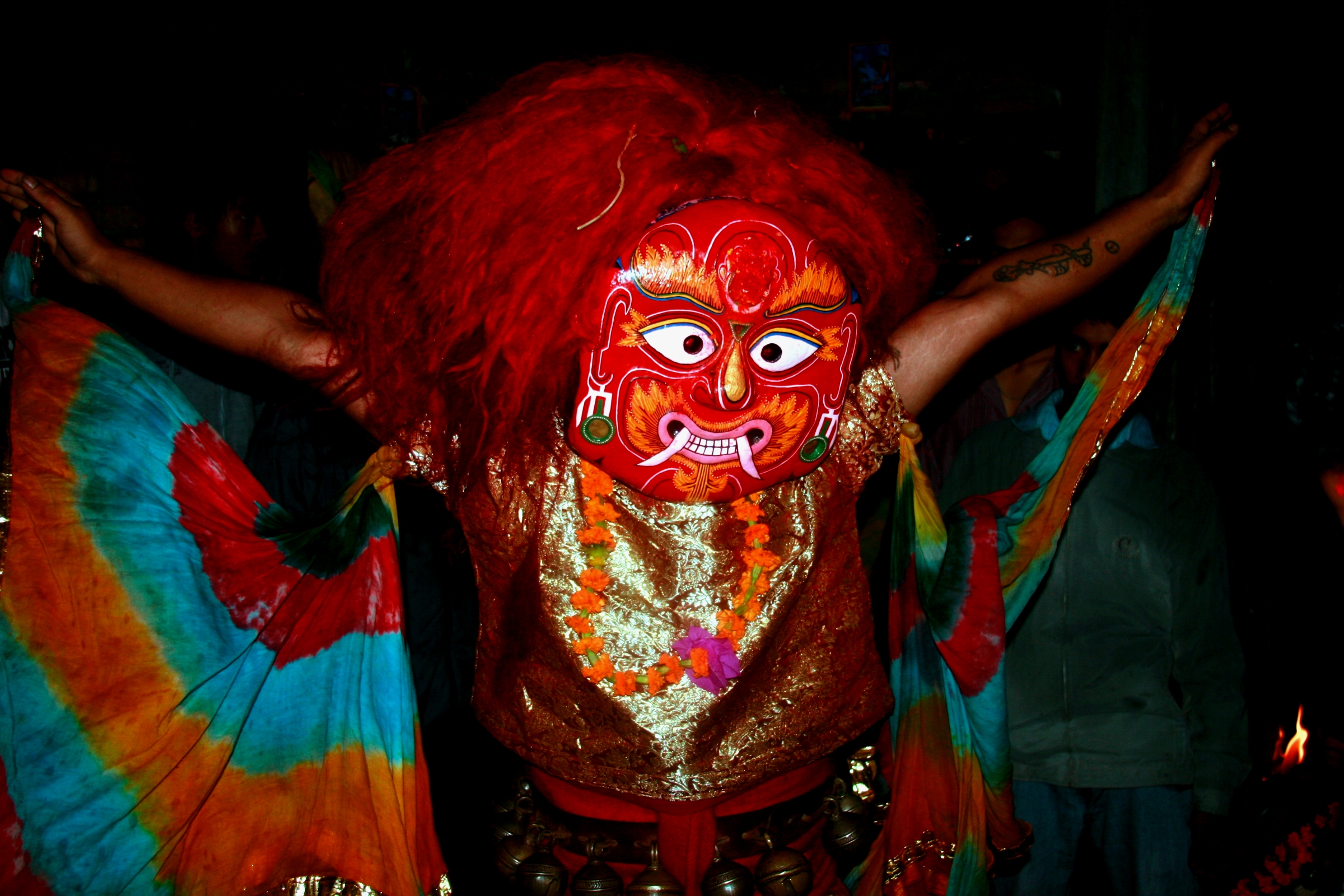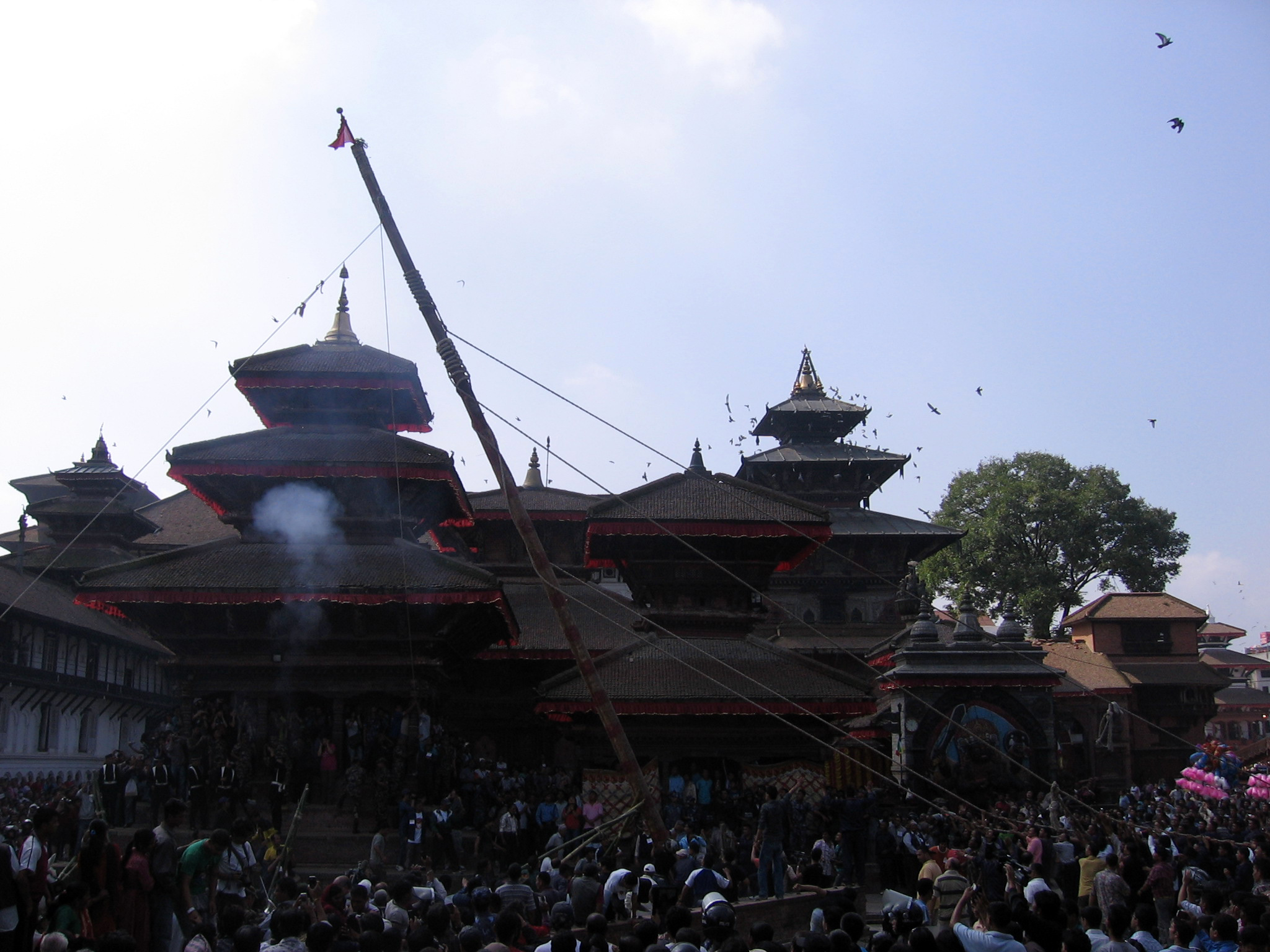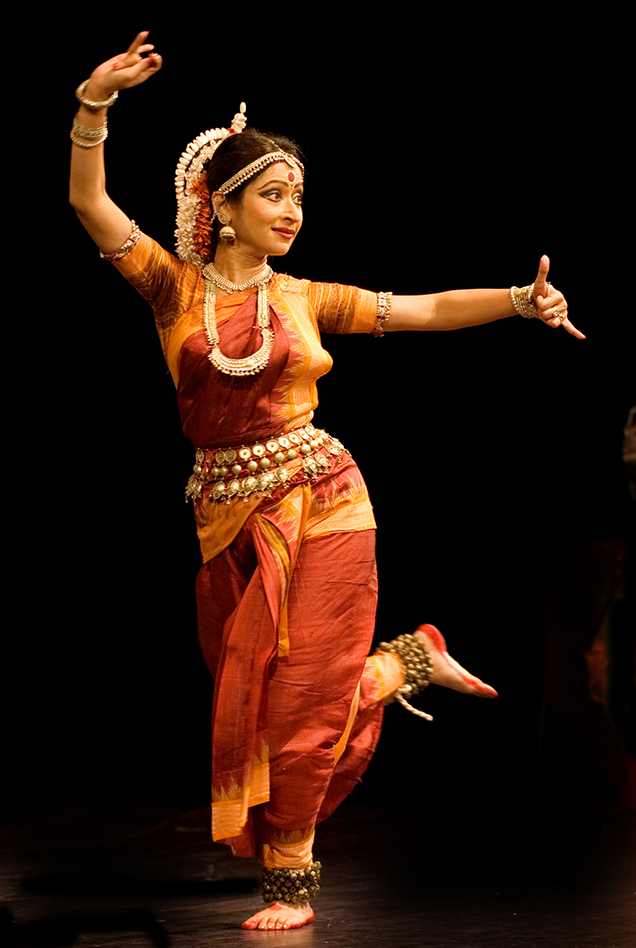|
Lakhey
Lākhey (Nepal Bhasa: लाखे or , lā-khé) (alternative spellings Lākhe, Lākhay, ) is the dance of a demon in the carnival of God. Durbar Square, a historic plaza in Kathmandu, Nepal, facing ancient palaces and adorned by Hindu temples, is always full of eager crowds on the last day of Indra Jatra, the festival celebrating Indra, the Hindu king of heaven. On this divine stage, Lakhe the demon dances among gods and deities relentlessly and carelessly. He is depicted with a ferocious face, protruding fangs, and a mane of red or black hair. Lakhes figure prominently in the traditional Newar culture of Nepal Mandala. The Lakhe tradition is found in the Kathmandu Valley and other Newar settlements throughout Nepal. Lakhes are said to be demons who used to live in the forests and later became protectors to the townspeople. A female Lakhe is known as Lasin (). The other common legendary being in Nepalese folklore is the Khyāh, who is depicted as a fat, hairy ape-like cre ... [...More Info...] [...Related Items...] OR: [Wikipedia] [Google] [Baidu] |
Majipa Lakhey
Majipa Lakhey (Nepal Bhasa: मजिपा लाखे, ) is a special lakhey in Nepalese folklore. He is also known as the Peaceful Bhairava (शान्त भैरव). The dance of this Lakhey takes place only in the week of the full moon of the month of Yenlaa of the Nepal Sambat calendar. He is considered to be the protector of the children. Etymology The Newari word ''Majipa'' is derived from Sanskrit "Manjupattan" "Manjusri city". Lākhe is the term used to denote carnivorous demons. Majipa Lakhey literally means the "carnivorous demon of Majipa". Mythology According to stories passed down through generations, majipa lakhey is supposed to have fallen in love with a girl from Majipa. So, the demon takes a form of a human and enters the city to see his beloved. Upon knowing the fact that the person is a Lakhey, the people capture the lakhey and present him to the king. The king makes a proposal to the demon that he will grant him a place in the city if he vows to pr ... [...More Info...] [...Related Items...] OR: [Wikipedia] [Google] [Baidu] |
Yenya
Indra Jātrā, also known as Yenyā (Nepal Bhasa: येँयाः), is the biggest religious street festival in Kathmandu, Nepal. The celebrations consist of two events, Indra Jātrā and Kumāri Jātrā. Indra Jātrā is marked by masked dances of deities and demons, displays of sacred images and tableaus in honor of the deity Indra, the king of heaven. Kumāri Jātrā is the chariot procession of the living goddess Kumari. Family members deceased in the past year are also remembered during the festival. The main venue of the festivities is Kathmandu Durbar Square. The celebrations last for eight days from the 12th day of the bright fortnight to the 4th day of the dark fortnight of Yanlā (ञला), the eleventh month in the lunar Nepal Era calendar. Indra Jatra was started by King Gunakamadeva- (गुणकामदेव) to commemorate the founding of the Kathmandu city in the 10th century. Kumari Jatra began in the mid-18th century. The celebrations are held accordi ... [...More Info...] [...Related Items...] OR: [Wikipedia] [Google] [Baidu] |
Masquerade Ceremonies In Asia
Masquerade or Masquerader may refer to: Events * Masquerade ball, a costumed dance event * Masquerade ceremony, a rite or cultural event in many parts of the world, especially the Caribbean and Africa * Masqueraders, the performers in the West Country Carnival Books * ''The Masquerader'' (novel), a 1904 novel by Katherine Cecil Thurston * ''The Masqueraders'', a 1928 novel by Georgette Heyer * ''Masquerade'' (book), a 1979 children's book by Kit Williams that sparked a worldwide treasure hunt * ''Masquerades'' (novel), a 1995 Forgotten Realms novel by Kate Novak and Jeff Grubb * ''Maskerade'', a 1995 Discworld novel by Terry Pratchett * ''Masquerade'', a 2007 '' Blue Bloods'' novel by Melissa de la Cruz Theatre * ''The Masquerade'' (play), a 1719 play by Charles Johnson * ''Mascarade'', a 1724 comedy play by Ludvig Holberg * ''Masquerade'' (play), an 1835 Russian play by Mikhail Lermontov * ''The Masqueraders'', an 1894 English play by Henry Arthur Jones * ''The Masquerad ... [...More Info...] [...Related Items...] OR: [Wikipedia] [Google] [Baidu] |
Dance In Nepal
Dance is a performing art form consisting of purposefully selected sequences of human movement. Dance (Nepal Bhasa:प्याखं/प्याखङ)() in Nepal comprises numerous styles of dances, including folk, ethnic, classical to modern dances. Lakhey is the dance of a demon in the carnival of God. Durbar Square, a historic plaza in Kathmandu, Nepal, facing ancient palaces and adorned by Hindu temples, is always full of eager crowds on the last day of Indra Jatra, the festival celebrating Indra, the Hindu king of heaven. In this divine stage, Lakhe the demon dances among gods and deities relentlessly and carelessly. Origin Legends state that dances in this country originated in the abode of Lord Shiva — the Himalayas, where he performed the tandava dance. This indicates that dance traditions of Nepal are very ancient and unique. With altitudes and ethnicity, the dances of Nepal slightly change in style as well as in the costumes. Ethnic and cultural dances * Lakhe ... [...More Info...] [...Related Items...] OR: [Wikipedia] [Google] [Baidu] |
Nepalese Legendary Creatures
Nepali or Nepalese may refer to : Concerning Nepal * Anything of, from, or related to Nepal * Nepali people, citizens of Nepal * Nepali language, an Indo-Aryan language found in Nepal, the current official national language and a language spoken in India * Nepal Bhasa, a Sino-Tibetan language found in Nepal, formerly the official national language * Nepalese literature * Nepalese cuisine * Nepalese culture * Nepali cinema * Nepali music Other uses * ''Nepali'' (film), a 2008 Indian Tamil-language film See also * Nepal (other) * * * Languages of Nepal * Nepal Nepal (; ne, :ne:नेपाल, नेपाल ), formerly the Federal Democratic Republic of Nepal ( ne, सङ्घीय लोकतान्त्रिक गणतन्त्र नेपाल ), is a landlocked country in S ... is a south Asian country with a population of nearly 30 million. {{disambiguation Language and nationality disambiguation pages ... [...More Info...] [...Related Items...] OR: [Wikipedia] [Google] [Baidu] |
Legendary Creatures In Popular Culture
Legendary may refer to: * Legend, a folklore genre * Legendary (hagiography) ** Anjou Legendarium * J. R. R. Tolkien's legendarium Film and television * ''Legendary'' (film), a 2010 American sports drama film * ''Legendary'', a 2013 film featuring Dolph Lundgren * ''Legendary'' (TV series), a 2020 American reality competition series * "Legendary" (''Legends of Tomorrow''), a television episode Music Albums * ''Legendary'' (AZ album), 2009 * ''Legendary'' (The Summer Set album) or the title song, 2013 * ''Legendary'' (TQ album) or the title song, 2013 * ''Legendary'' (Tyga album) or the title song, 2019 * ''Legendary'' (Z-Ro album), 2016 * ''Legendary'' (Zao album), 2003 * ''Legendary'', by Kaysha, 2006 * ''The Legendary'', an EP by the Roots, 1999 Songs * "Legendary" (Deadmau5 and Shotty Horroh song), 2017 * "Legendary" (Welshly Arms song), 2016 * "Legendary", by Alaska Thunderfuck from ''Anus'', 2015 * "Legendary", by Daya from '' Daya'', 2015 * "Legendary", by Ro ... [...More Info...] [...Related Items...] OR: [Wikipedia] [Google] [Baidu] |
Sacred Dance
Sacred dance is the use of dance in religious ceremonies and rituals, present in most religions throughout history and prehistory. Its connection with the human body and fertility has caused it to be forbidden by some religions; for example, some branches of Christianity and Islam have prohibited dancing. Dance has formed a major element of worship in Hindu temples, with strictly formalized styles such as Bharatanatyam, which require skilled dancers and temple musicians. In the 20th century, sacred dance has been revived by choreographers such as Bernhard Wosien as a means of developing community spirit. Purposes The theologian W. O. E. Oesterley proposed in 1923 that sacred dance had several purposes, the most important being to honour supernatural powers; the other purposes were to "show off" before the powers; to unite the dancer with a supernatural power, as in the dances for the Greek goddesses Demeter and Persephone; making the body suitable as a temporary dwelling-place ... [...More Info...] [...Related Items...] OR: [Wikipedia] [Google] [Baidu] |
Ritual Dances
Ceremonial dance is a major category or classification of dance forms or dance styles, where the purpose is ceremonial or ritualistic. It is related to and overlaps with sacred dance and ecstatic dance. Definition History Description List of ceremonial dances * Festival dance * Dance in ancient cultures ** Dance in ancient Egypt ** Ancient Greece ** Ancient Rome ** Indian classical dance * Ritual dance, Magic/Mystic/Spiritual dance ** Abbots Bromley Horn Dance ** Some Basque dances ** Căluşari ** Circle dance ** Corroborree ** Dances of Universal Peace **Kagura ** Long Sword dance ** Morris dance ** Rapper dance ** Religious dance ** Ritual dances of China ** Ritual dances of India ** Sema, or Whirling dervish dance ** Sinulog ** Sublî ** War dance ** Weapon dance A weapon, arm or armament is any implement or device that can be used to deter, threaten, inflict physical damage, harm, or kill. Weapons are used to increase the efficacy and efficiency of activit ... [...More Info...] [...Related Items...] OR: [Wikipedia] [Google] [Baidu] |
Masked Dances
A mask is an object normally worn on the face, typically for protection, disguise, performance, or entertainment and often they have been employed for rituals and rights. Masks have been used since antiquity for both ceremonial and practical purposes, as well as in the performing arts and for entertainment. They are usually worn on the face, although they may also be positioned for effect elsewhere on the wearer's body. More generally in art history, especially sculpture, "mask" is the term for a face without a body that is not modelled in the round (which would make it a "head"), but for example appears in low relief. Etymology The word "mask" appeared in English in the 1530s, from Middle French ''masque'' "covering to hide or guard the face", derived in turn from Italian ''maschera'', from Medieval Latin ''masca'' "mask, specter, nightmare". This word is of uncertain origin, perhaps from Arabic ''maskharah'' مَسْخَرَۃٌ "buffoon", from the verb ''sakhira'' "t ... [...More Info...] [...Related Items...] OR: [Wikipedia] [Google] [Baidu] |
Demons
A demon is a malevolent supernatural entity. Historically, belief in demons, or stories about demons, occurs in religion, occultism, literature, fiction, mythology, and folklore; as well as in media such as comics, video games, movies, anime, and television series. Belief in demons probably goes back to the Paleolithic age, stemming from humanity's fear of the unknown, the strange and the horrific. ''A Dictionary of Comparative Religion'' edited by S.G.F. Brandon 1970 In ancient Near Eastern religions and in the Abrahamic religions, including early Judaism and ancient-medieval Christian demonology, a demon is considered a harmful spiritual entity which may cause demonic possession, calling for an exorcism. Large portions of Jewish demonology, a key influence on Christianity and Islam, originated from a later form of Zoroastrianism, and was transferred to Judaism during the Persian era. Demons may or may not also be considered to be devils: minions of the Devil. In many tr ... [...More Info...] [...Related Items...] OR: [Wikipedia] [Google] [Baidu] |
Nepalese Culture
The culture of Nepal encompasses the various cultures belonging to the 125 distinct ethnic groups present in Nepal. The culture of Nepal is expressed through music and dance; art and craft; folklore; languages and literature; philosophy and religion; festivals and celebration; foods and drinks. Dance and music Legends state that dances in this country originated in the abode of Lord Shiva — the Himalayas, where he performed the tandava dance. This indicates that dance traditions of Nepal are very ancient and unique. With altitudes and ethnicity, the dances of Nepal slightly change in style as well as in the costumes. The Dishka, a dance performed at weddings, includes intricate footwork and arm movements. Accompanying music and musical instruments change in tune with the themes, which revolve around topics like harvesting of crops, marriage rites, war stories, a lonely girl's yearning for her love, and several other themes and stories from everyday life in the villages. The ... [...More Info...] [...Related Items...] OR: [Wikipedia] [Google] [Baidu] |
Spontaneous Combustion
Spontaneous combustion or spontaneous ignition is a type of combustion which occurs by self-heating (increase in temperature due to exothermic internal reactions), followed by thermal runaway (self heating which rapidly accelerates to high temperatures) and finally, autoignition. Cause and ignition Spontaneous combustion can occur when a substance with a relatively low ignition temperature (hay, straw, peat, etc.) begins to release heat. This may occur in several ways, either by oxidation in the presence of moisture and air, or bacterial fermentation, which generates heat. The heat is unable to escape (hay, straw, peat, etc. are good thermal insulators), and the temperature of the material rises. The temperature of the material rises above its ignition point (even though much of the bacteria are destroyed by ignition temperatures). Combustion begins if sufficient oxidizer, such as oxygen, and fuel are present to maintain the reaction into thermal runaway. Affected materials ... [...More Info...] [...Related Items...] OR: [Wikipedia] [Google] [Baidu] |


.jpg)



